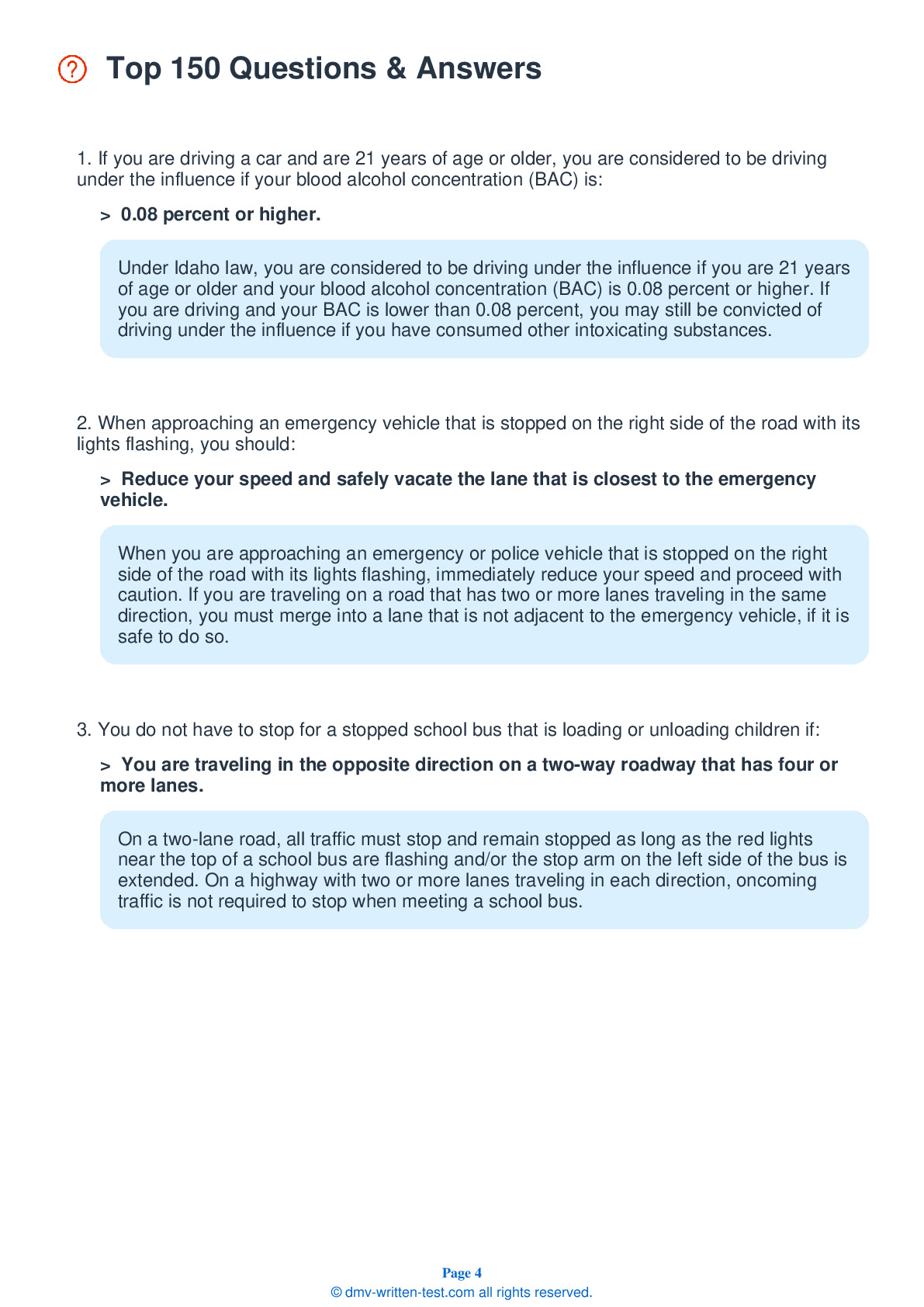2025 Idaho Permit Test 5
The following questions are from real DMV written tests. These are some of the actual permit questions you will face in Idaho. Each permit practice test question has three answer choices. Select one answer for each question and select "grade this section." You can find this button at the bottom of the drivers license quiz. For a complete list of questions and answers for Idaho please visit https://cheat-sheets.dmv-written-test.com/en/idaho/car.
Number of Tests
Number of Question
Passing Score
33. As you drive, you're required to stop your vehicle:
Explanation
Situations where motorists are required to stop include approaching intersections with stop signs, approaching intersections where a red light is either flashing or illuminated, or any time when a traffic officer orders your vehicle to stop.
34. A solid yellow line on your side of the centerline means:
Explanation
A solid yellow line next to your lane means that passing is not permitted from your direction.
35. You are entering a crowded freeway. What should you do to merge into traffic?
Explanation
Use the entrance ramp to accelerate to the speed of freeway traffic and yield to traffic already using the freeway. Before entering traffic, use your mirrors and check your blind spots to verify that you have room to safely merge.
36. When meeting a car with blinding headlights, you should:
Explanation
If a vehicle comes toward you with its high beams on, look away from the headlights and toward the right side of the road until the car has passed. This will keep you from being blinded.
37. A bicyclist who doesn’t obey traffic laws:
Explanation
All bicyclists have the same rights, duties, and responsibilities as drivers of motor vehicles. Motorists and bicyclists who do not obey traffic laws can be ticketed.
38. When making a left turn:
Explanation
Yield to other drivers when making a left turn. Always yield to pedestrians and oncoming traffic, unless directed otherwise by signs, signals, flaggers, or officers.
39. Signaling your intentions before turning, changing lanes, or driving away from a curb:
Explanation
When changing lanes or turning, signal your intentions well in advance. The law requires that you signal for at least 100 feet before you move your vehicle to the right or left. Before pulling away from a curb, always signal to inform passing drivers of your intentions.
40. Which of the following is true regarding seat belts and child restraints in vehicles?
Explanation




